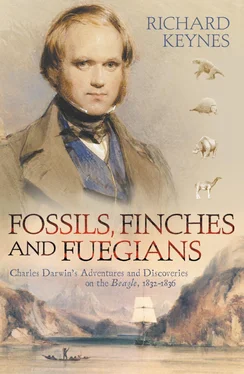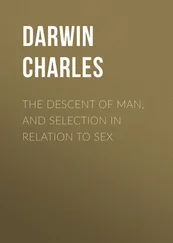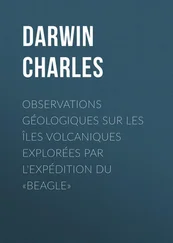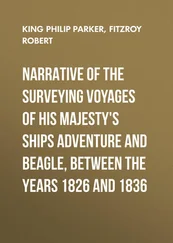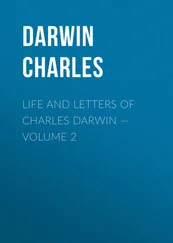Charles recorded that at a very early age he had a passion for collecting ‘all sorts of things, shells, seals, franks, coins, and minerals … which leads a man to be a systematic naturalist, a virtuoso or a miser’. Throughout his life he also exercised a scientifically useful taste for making careful lists, whether of his various collections, of the game that he had killed, of books that he had read or intended to read, of the pros and cons of marriage, or of his household accounts.
During his formal education at Shrewsbury School, where like his elder brother Erasmus he boarded for some years, he was taught mainly classics, ancient geography and history, and a little mathematics, but there was no place for science in the curriculum. However, their grandfathers’ strong interest in chemistry managed to break through in both boys, first in Erasmus and then in Charles, and together they set up in an outhouse at home what they grandly called their ‘Laboratory’. Here they could pursue a hobby fashionable at the time in the upper classes for investigating the composition of various domestic materials, sometimes after purification of their constituents by crystallisation, though they were seldom able to extract sufficient funds from their father to provide any really sophisticated chemical apparatus. For a while the application of elementary crystallography to his collection of rocks and stones was one of Charles’s favourite occupations.
In 1822 Erasmus left school, and was sent to study at Cambridge, where he wrote a helpful series of letters to Charles with detailed instructions for further experiments. This encouraged Charles to examine the effect on different substances of heating them over an open flame, sometimes with a blow-pipe at the gaslight in his bedroom at school, earning him the nickname of ‘Gas’ and the strong disapproval of the headmaster. Over this period, Charles delighted in devising simple instruments for performance of his tests, and under the tuition of Erasmus served a useful initial apprenticeship in the art of scientific experimentation.
Robert Darwin now decided that Erasmus should proceed from Cambridge to Edinburgh University as he had done himself in order to take an M.B. degree, and that Charles should leave school at the age of sixteen and accompany his brother to Edinburgh in October 1825 with the same object. The plan did not quite work out, for although Erasmus did eventually pass the Cambridge M.B. exam in 1828, his poor health led to his retirement to London as a gentleman of leisure, and he never practised. Charles, on the other hand, having signed up for the traditional courses on anatomy, surgery, the practice of physic, and materia medica , the remedial substances used in medicine, which his father and grandfather had taken in their day, soon found that many of the lectures were now sadly out of date, and that conditions in the dissecting room and on two occasions in the operating room were so highly distasteful that he felt unable to continue on the course. It was not until the end of his second year that he was at last able to confess to his father his determination to abandon medicine as a career, but in the meantime Edinburgh provided other avenues to fill his time that assisted materially in his development as a scientist.
During his first year at Edinburgh, Charles took regular walks with Erasmus on the shores of the Firth of Forth, where he made his first acquaintance with some of the marine animals that later occupied him so intensively on the Beagle . At the same time he maintained his interest in ornithology, and arranged to have lessons on stuffing birds from a ‘blackamoor’ who had been taught taxidermy by the naturalist Charles Waterton. He and Erasmus also revived their knowledge of chemistry and related areas of geology by attending the stimulating lectures and demonstrations given by Thomas Charles Hope, Professor of Chemistry in the university from 1799 to 1843.
In 1826, Erasmus had remained at home, and Charles was left to fend for himself. He attended Robert Jameson’s popular series of extracurricular lectures covering meteorology, hydrography, mineralogy, geology, botany and zoology, but said many years later that ‘they were incredibly dull. The sole effect they produced on me was the determination never as long as I lived to read a book on Geology or in any way to study the science.’ Although it was true that Jameson’s style of lecturing did not inspire his audience, Charles’s copy of Jameson’s Manual of Mineralogy is heavily annotated, and provided him with a valuable source of practical information for his subsequent geological studies. He also benefited from exposure to the critical clash between Hope’s Huttonian views and Jameson’s preference for the Wernerian doctrine, * soon coming down firmly on Hope’s side. In any case, any temporary prejudice that Charles may have had against geology did not last long, and in due course was banished by Professors Henslow and Sedgwick after his arrival at Cambridge.
In November, Charles became a member of the Plinian Society, named after Pliny the Elder, author of a famous account of the natural history of ancient Rome, at which a small group of undergraduates would meet informally for discussions of natural history or sometimes to go on collecting expeditions, but from participation in which the university professors were traditionally banned. He was also taken as a guest from time to time to the august Wernerian Society, whose membership was restricted to graduates, and whose proceedings were published in a series of learned memoirs. At a meeting of the Wernerian Society on 16 December 1826, he listened attentively to a paper on the buzzard in which the great American ornithologist and artist John James Audubon, who had recently arrived in Edinburgh to find an engraver for the first ten plates of his Birds of America , exploded the currently fashionable view of the extraordinary power of smelling possessed by vultures. When nine years later Charles was making observations in Chile on the behaviour of condors, he was happy to find himself in agreement with Audubon’s conclusions.
The senior member of the Plinian Society was at that time Robert Grant, then aged thirty-three and a mere lecturer on invertebrate animals at an extramural anatomy school, who had graduated as a doctor in 1814, travelled extensively on the Continent, and studied in Paris with the zoologist and anatomist Georges Cuvier (1769–1832). Soon Charles was taken by Grant to collect a variety of animals along the shores in the neighbourhood of Leith, and to go out with fishermen on the waters of the Firth of Forth. On these trips he was sometimes accompanied by another medical student, John Coldstream, who later advised him helpfully about fishing nets. Grant also taught Charles how to dissect specimens under sea water with the aid of a crude single-lens microscope, and gave him a valuable training in marine biology, with an emphasis on the importance of developmental studies on invertebrates, which was taken up with enthusiasm by a pupil who all too quickly outshone his master.
Among Grant’s favourite subjects for research were the not very glamorous ‘moss animals’ of genus Flustra that encrusted the tidal rocks in bunches like a miniature seaweed, and which consisted of large numbers of microscopic polyps whose precise relationship with one another was unclear. There had long been controversy as to whether they should be classified as animals or plants, and the Swedish botanist and founder of the system of binomial nomenclature of species Carl Linnaeus (1707–78) had christened them Zoophyta, an intermediate form. By the beginning of the nineteenth century it had been widely but not yet universally accepted that these organisms were indeed sedentary aquatic animals, which formed colonies often containing millions of individual polyps or zooids with specialised functions. In 1830 the phylum * to which they belonged was termed Polyzoa by J. Vaughan Thompson, and nowadays the animals are classified as Bryozoa.
Читать дальше
